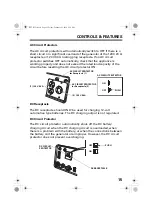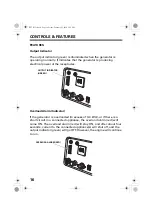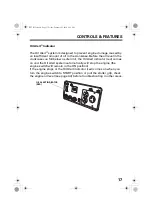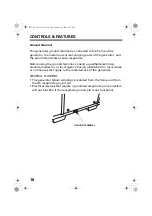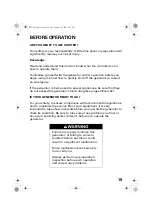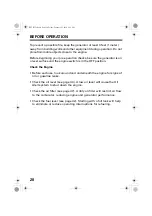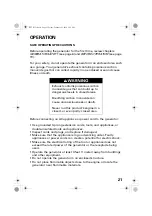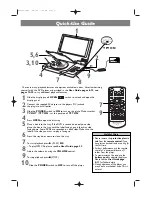
6
GENERATOR SAFETY
IMPORTANT SAFETY INFORMATION
Honda generators are designed for use with electrical equipment that
has suitable power requirements. Other uses can result in injury to the
operator or damage to the generator and other property.
Most injuries or property damage can be prevented if you follow all
the instructions in this manual and on the generator. The most
common hazards are discussed below, along with the best way to
protect yourself and others.
Never attempt to modify the generator. It could result in an injury as
well as damage to the generator and/or the attached appliances.
• Do not connect an extension to the muffler.
• Do not modify the intake system.
• Do not remove the control panel or change the control panel wiring.
Operator Responsibility
• Know how to stop the generator quickly in case of emergency.
• Understand the use of all generator controls, output receptacles,
and connections.
• Be sure that anyone who operates the generator receives proper
instruction. Do not let children operate the generator without
parental supervision.
Carbon Monoxide Hazards
A generator's exhaust contains toxic carbon monoxide, which you
cannot see or smell. Breathing carbon monoxide can KILL YOU IN
MINUTES. To avoid carbon monoxide poisoning, follow these
instructions when operating a generator:
• Only run a generator OUTSIDE, far away from windows, doors, and
vents.
• Never operate a generator inside a house, garage, basement, crawl
space, or any enclosed or partially enclosed space.
• Never operate a generator near open doors or windows.
• Get fresh air and seek medical attention immediately if you suspect
you have inhaled carbon monoxide.
Early symptoms of carbon monoxide exposure include headache,
fatigue, shortness of breath, nausea, and dizziness. Continued
exposure to carbon monoxide can cause loss of muscular
coordination, loss of consciousness, and then death.
31ZT76331.book Page 6 Friday, February 23, 2018 2:59 PM

















